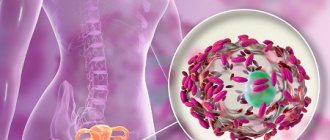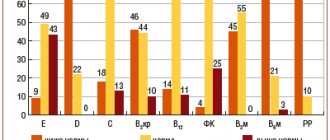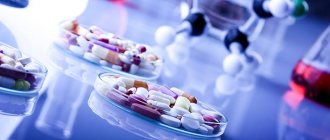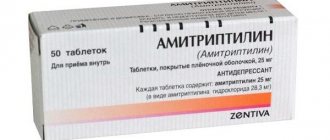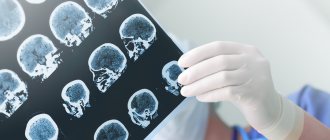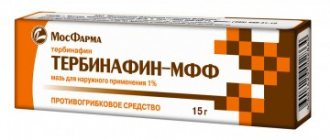What nootropic drugs are considered the most famous and widely used in medical practice? What nootropics are commonly used for children, the elderly, for psychoneurological disorders and healthy individuals to stimulate mental activity? We addressed these questions to the Chief Doctor of the Multidisciplinary Medical Center, psychiatrist, psychiatrist-narcologist and psychotherapist Vladislav Sipovich.
What nootropics (list of drugs and their characteristics) are widely used in pediatrics?
First of all, I would like to remind you that nootropics in pediatrics have fairly clear indications for use. These are, first of all, the following conditions: • Prevention and treatment of child retardation in mental, motor and speech (after 3 years) development. • Stimulation of central nervous system functions associated with the processes of learning, concentration, memorization and reproduction of information. • Organic damage to the central nervous system as a result of neuroinfections, traumatic brain injuries, genetic diseases. • Cerebral palsy. • Urinary disorders of neurogenic nature. • Stuttering. • Complex therapy of epilepsy. • Neurotic conditions and asthenia (obsessive-compulsive disorder) • ADHD – attention deficit hyperactivity disorder. Most often, children are prescribed nootropics from the list of so-called true nootropics, which primarily affect the mnestic (memory) and cognitive (cognitive) abilities of a person of any age. These are nootropic drugs such as: • Racetams. • Neuropeptides. • Cholinergic nootropics. • Neuroprotectors. • Activators of amino acids and GABA (gamma-aminobutyric acid). • Antioxidants. Of the Racetams, the most significant and widespread is Piracetam - a drug used by doctors for almost 50 years and being the founder of nootropic drugs, the list of which is constantly expanding and updated. Known under the commercial name nootropil. In children, it is especially effective as a stimulator of speech development, and also helps well with cerebral palsy and mental retardation, during rehabilitation after TBI and GM intoxication, and helps increase learning ability. Available in a wide variety of pharmacological forms - tablets, granules, capsules, syrups, solutions for parenteral administration. Peculiarities of use: not recommended for use in the afternoon.
In childhood, drugs such as: • Cortexin, which is considered the best for children 1 year of life, are also often prescribed. It can be used starting from the first birthday. It has a positive effect on the nervous system, including the peripheral one, counteracts toxic effects, improves blood circulation, and is used in the complex treatment of epilepsy. In addition, cortexin improves memory, increases resistance to stress and is effective when taken by children with developmental delays (psychomotor and speech). Quite popular among students, especially during sessions, to improve memory and assimilate large amounts of information. Cortexin also has positive reviews from parents and pediatricians; it is quite safe, but quite expensive. Available in the form of a lyophilisate (powder dried at sub-zero temperatures). • Semax 0.1% solution is the safest and is produced in the form of nasal drops convenient for use in children. It has virtually no side effects, except for rare and minor irritation of the mucous membrane. It belongs to the peptide series of nootropics and has a positive effect on attention, learning and perception. In addition, it helps restore and adapt the nervous system after anesthesia. In pediatrics, it has proven itself well in the treatment of brain dysfunction in children over 5 years of age. The advantages of Semax include high safety and a convenient release form for use. A relative disadvantage is the need to store the drug in the refrigerator at a temperature not exceeding 8 degrees.
• Cerebrolysin, which is a neuropeptide of animal origin (a concentrate of peptides from the brain of pigs or cattle. It is actively used as an activator of neural metabolism, helps to increase concentration and reduce hyperactivity. Its disadvantage is that it is a relatively expensive drug and is produced only in in the form of injection solutions, and the plus is that this is one of the most effective nootropics for developmental delays in children.Side effects are rare and boil down to individual allergic reactions to the components of the drug, insomnia and, extremely rarely, arrhythmias.
For delayed speech development (DSD), the following nootropics are also effective: • GABA analogues and derivatives (Picamilon, Pantogam), which normalize the conduction of nerve impulses and improve glucose utilization and oxygen consumption in neurons. Being inhibitory mediators, they are effective for hyperactivity and increased excitability of the central nervous system. • Pyritinol drugs (Encephabol, Cerebol), which have a neuroprotective (stabilization of membranes and inhibition of the production of free radicals that destroy the structure of cells) and antihypoxic effects. • Ceraxon is a stimulant of central nervous system activity, containing citicoline, which is responsible for restoring neuronal membranes and their energy supply, as well as reducing the amount of intercellular fluid in the brain and thus providing an anti-edematous effect. It is recommended not only for mental retardation with symptoms of inhibition, but also for autism. To summarize the answer to this question, I would like to say that the choice of nootropic drugs, the list of which, taking into account the new generation drugs, includes more than a hundred items, remains with the pediatrician. Under no circumstances should you prescribe nootropics on your own, even based on the indications indicated in the instructions. Of course, nootropics are quite safe drugs that have a positive effect on the nervous system, but each of them has its own preferential effect and is aimed at different processes in the nervous tissue. By independently prescribing CNS activators to a small patient with hyperactivity, parents can get increased activity and increased excitability in their child, leading him to a nervous breakdown and treatment by a child psychiatrist. To prevent such excesses, the vast majority of nootropics are sold in pharmacies only with a doctor’s prescription. Some of them can be purchased without a prescription, but their list is quite limited. I will dwell on them in more detail at the end of the interview.
Medications to take regularly for panic attacks
Constant use of pharmacotherapy allows you to stabilize the biochemical and physiological processes in the nervous system that are responsible for the development of panic attacks.
Basically, such drugs act on specific receptors in the brain and restore the normal activity of neurotransmitters: dopamine, serotonin, norepinephrine, adrenaline, acetylcholine and others.
Antidepressants
Mainly affects serotonin receptors of the nervous system. They are used in courses of several months (from three to more than a year). The most “popular” and common antidepressants for preventing panic attacks:
- Escitalopram (cipralex, elicea);
- Paroxetine (Paxil);
- Amitriptyline;
- Sertraline (Zoloft);
- Fluvoxamine (fevarin).
Neuroleptics
They act predominantly on dopamine receptors in the brain. Prescribed in cases where panic attacks are a manifestation of an endogenous disease. Like antidepressants, they are taken for a long time from several months to several years.
Contrary to popular belief among people with anxiety disorders, they do not cause addiction. The most commonly used antipsychotics for long-term treatment of panic attacks are:
- Thioridazine (Sonapax);
- Sulpiride (eglonil);
- Quetiapine (Seroquel);
- Risperidone (rispolept);
- Flupenthixol (fluanxol).
Normotimic drugs
Their mechanism of action is the normalization of the ratio of excitation and inhibition processes in the brain. Most effective for panic attacks due to encephalopathy, consequences of traumatic brain injuries, strokes, and hypoxia.
The most common representatives of normotimics:
- valproic acid (Depakine Chrono),
- lamotrigine (Lamictal),
- carbamazepine (finlepsin).
To summarize, it can be noted that among the above-listed medications there are several drugs with a universal effect: they are suitable both for a single dose to quickly relieve a panic attack, and for long-term use. These are the antidepressant amitriptyline and the antipsychotics quetiapine, thioridazine and sulpiride.
This material is for informational purposes only. Under no circumstances should you use the medications described above for panic attacks on your own. Any use of the drug should only be as prescribed by a doctor! Don't self-medicate!
What nootropic drugs are prescribed to older people and for what purpose?
Indications for prescribing nootropics to older people are the following conditions: • Alzheimer's disease. • Syndromes of confused consciousness and fragmented thinking. • Pick's disease. • Disorientation in space and time. • Confusion and instability of attention. • Emotional imbalance. • Anxiety disorder. • Illusory perception. • Memory problems. • Sleep disorders. • Motor overexcitation or retardation.
In addition, nootropics can also be prescribed for preventive purposes to slow down age-related changes in the neuropsychic sphere associated with cerebrovascular accidents, weakening of memory and cognitive abilities. Among the nootropic drugs used for older people, the most common and popular are: • Cavinton, the active ingredient of which is vinpocetine. Its main therapeutic effect is aimed at improving cerebral circulation by reducing blood viscosity and, accordingly, improving the supply of oxygen to the brain. It is characterized by a targeted selective effect on the affected area of the brain, so this nootropic drug is especially effective in the treatment and rehabilitation after stroke, vascular dementia and cerebrovascular accidents. It is also used in the treatment of vascular and retinal lesions and Meniere's disease. Side effects may include nausea, heartburn, weakness, headache and tachycardia, which is a disadvantage of the drug and a contraindication for its use in case of heart rhythm disturbances (arrhythmias). • Encephabol – stimulates metabolic processes in the brain by accelerating the utilization of glucose, normalizes blood circulation in areas affected by ischemia, and helps restore the functions of the nervous system. Other therapeutic effects include improved memory, increased mental activity and overall central nervous system tone. It helps well in overcoming the negative consequences of encephalitis, as well as in the treatment of cerebroasthenic syndrome and mental retardation in children. The downside is the ability to cause allergic reactions in people sensitive to pyritinol, as well as the high price.
• Phenibut is a drug that combines nootropic and tranquilizing effects. Which manifests itself in a decrease in the excitability of the nervous system, a decrease in anxiety and fear. The drug prolongs the duration of action and enhances the effect of sleeping pills. With long-term use, it increases physical and intellectual capabilities, normalizes sleep, and improves memory. Effective in the complex treatment of withdrawal syndrome in alcoholism. The downside is the possibility of withdrawal syndrome after completing the course of the drug.
• Picamilon is a nootropic drug popular among doctors and patients, which has several effects: a psychostimulant, a tranquilizer and an antioxidant. Improves metabolic processes and blood supply to brain tissue, reduces the intensity of headaches, relieves anxiety and nervous tension, and also increases a person’s physical and intellectual capabilities. Has a positive effect on the restoration of motor and speech functions after stroke and toxic lesions of the brain. In older people, it has a good effect in the complex treatment of migraines, cerebrovascular accidents, and retinal diseases. Side effects include the possibility of developing an allergic response to this drug.
The use of nootropics in older people should be treated very carefully, taking into account the depth of age-related changes, possible side effects, prevailing symptoms, the presence of concomitant diseases and the general condition of the body. Only a specialist can objectively evaluate all these aspects and correctly prescribe treatment using nootropics. Prescribing these drugs to your elderly relatives yourself is extremely undesirable and unsafe for their health.
Modern ideas about nootropic drugs
Drugs that affect the processes of neuroplasticity of the central nervous system occupy one of the leading positions in the treatment of vascular diseases of the brain. Currently, some researchers (E. I. Gusev, 1992, 2000, 2005; V. I. Skvortsova, 2000, 2003, 2004; N. V. Vereshchagin, 2001; Z. A. Suslina, 2003; etc.) They believe that the reorganization of neuronal processes is a combination of a number of mechanisms, including the functioning of previously inactive pathways, sprouting of fibers of surviving cells with the formation of new synapses, and activation of neuronal circuits. It is known that one of the universal components of the pathogenesis of damage to nervous tissue is trophic dysregulation, leading to biochemical and functional dedifferentiation of neurons with the initiation of a cascade of pathobiochemical reactions (V. I. Skvortsova, 2001; T. L. Deckwirth et al., 1993; RS Freeman, 1994).
Traditionally, angioneurology uses a number of drugs that affect plastic, neurotransmitter, neuroprotective and integrative processes in the brain. Among them, nootropic drugs occupy a special place.
Nootropic drugs are drugs that have an activating effect on cerebral metabolism and higher mental functions. They are characterized by a metabolic and neurotrophic effect, which determines the processes of improving redox reactions, reducing the aggressive effect of lipid peroxidation (LPO) products, and a positive effect on neurotransmission. In addition, these drugs have a vasoactive and mild antiplatelet effect - they reduce platelet aggregation, reduce the adhesion of erythrocytes to the endothelial surface, and reduce blood viscosity.
The group of drugs that nootropic drugs make up is developing very dynamically both in Russia and abroad. About 60 leading pharmaceutical companies in various countries are developing new drugs. According to the Pharmaprojects Yearbook, in 1995, 132 nootropic drugs were in various stages of research, clinical study and introduction to the market, of which 79 were in preclinical research, 34 were in various stages of clinical study, and 19 were at the stage of registration and introduction into the market. market.
The term “nootropics” (from the Greek “noos” - thinking and “tropos” - striving) was first used in 1972 by Cornelia Guirgea to describe the effect of piracetam from the Belgian company UCB.
Subsequently, this term also began to be used to refer to drugs with different chemical structures that can improve cognitive functions. The classification of these drugs is difficult due to the lack of clear criteria for dividing drugs into those that have and/or do not have a nootropic effect. Currently, there are several classes of nootropic drugs.
- Pyrrolidone derivatives (piracetam, lucetam, phenotropil).
- Dimethylaminoethanol derivatives (demanol, deanol aceglumate).
- Pyridoxine derivatives (encephabol, pyritinol).
- Derivatives of γ-aminobutyric acid (GABA) (aminalone, picamilon, phenibut, gammalon).
- Ginkgo biloba derivatives (tanakan, bilobil).
- Drugs that act on N-methyl-D-aspartate (NMDA) receptors (akatinol memantine).
- Drugs with tropism for cholinergic structures (gliatilin).
- Preparations of animal origin (Cerebrolysin, Cortexin, Actovegin).
- Mixed-action drugs (instenon).
As a result of numerous clinical and experimental studies, the main mechanisms of action of nootropic drugs have been determined.
- Accelerating the penetration of glucose through the blood-brain barrier and increasing its absorption by brain cells, especially in the cerebral cortex.
- Strengthening the conduction of cholinergic impulses in the central nervous system (CNS).
- Increased synthesis of phospholipids and proteins in nerve cells and red blood cells (stabilization of cell membranes), normalization of the liquid properties of membranes.
- Inhibition of lysosomal enzymes and scavenging of free radicals.
- Activation of cerebral microcirculation by improving the deformability of erythrocytes and preventing platelet aggregation.
- Improved cortical-subcortical interaction.
- Normalization of neurotransmitter disorders.
- Activating effect on higher mental functions (memory, learning ability, etc.).
- Improving reparative processes in case of brain damage of various origins.
Due to these properties, a group of nootropic drugs is often called neurometabolic cerebroprotectors, which indicates a common property for drugs in this group - to stimulate metabolic processes in nervous tissue, optimizing the level of metabolism. According to the severity of their effect on the central nervous system, nootropics can be arranged in the following sequence: phenibut–aminalone–pantogam–picamilon–piracetam–pyritinol–meclofenoxate.
Phenibut has the most pronounced depressive effect, meclofenoxate has the most distinct psychostimulant properties. The “pioneer” of nootropic therapy is piracetam.
Piracetam has a chemical structure similar to GABA and is considered a derivative of this amino acid, but it is not converted into GABA in the body and the GABA content in the brain does not increase after its use. But in relatively large doses and with repeated administration, the drug can enhance GABAergic inhibitory processes.
There are two main directions of action of piracetam: neuroprotective and vascular. Piracetam promotes the oxidative breakdown of glucose through the pentose phosphate shunt, increasing the metabolism of adenosine triphosphate (ATP), as well as the level of cyclic adenosine monophosphate (cAMP). The functioning of this shunt is associated with the formation of substances that neutralize free radicals and prevent membrane lipid peroxidation. The drug stimulates the activity of adenylate kinase, ensuring anaerobic metabolism without the formation of lactate. After administration of the drug in patients with acute ischemic stroke, glucose metabolism, local cerebral blood flow, extraction coefficient and local oxygen metabolism increase in the affected area and the surrounding functionally inactive zone. Piracetam interacts with the neurotransmitter system, exerting a modulating effect on cholinergic and aminacidergic (aspartate, glutamate) neurotransmission, which is especially important since disorders of synaptic transmission involving acetylcholine and glutamate cause “age-related” changes in memory and other cognitive functions. The drug also stimulates interhemispheric information exchange, which underlies the restoration of speech functions lost after a stroke. The effect of piracetam on the vestibular system is described due to its effect on the mechanisms of signal transmission from sources of visual and proprioceptive sensitivity or its effect on the vestibular nucleus in the brain stem. The vascular effect of the drug is due to a decrease in platelet aggregation, an increase in the deformability of erythrocytes, a decrease in the adhesion of erythrocytes to the endothelial surface, and a decrease in the viscosity of plasma and whole blood. Reducing vasospasm without a vasodilator effect and hypotension makes it possible to have a positive effect on cerebral circulation, not accompanied by a change in general hemodynamics. A peculiarity of piracetam is that its pharmacological effect is manifested only under conditions of prolonged repeated administration of the drug in sufficiently high doses.
Phenotropil (chemical name: N-carbamoyl-methyl-4-phenyl-2-pyrrolidone) is a derivative of pyrrolidone, has a pronounced antiamnestic effect, has an activating effect on the integrative activity of the brain, promotes memory consolidation, increases the resistance of brain tissue to hypoxia and toxic effects . It is characterized by anticonvulsant and anxiolytic effects.
Phenotropil is used with caution in patients with severe organic damage to the liver and kidneys, severe forms of arterial hypertension in patients with atherosclerosis, as well as in those who have previously suffered panic attacks, anxiety or acute psychotic states, especially with psychomotor agitation, due to the possibility of exacerbation of anxiety, panic, hallucinations and delirium.
With excessive psycho-emotional exhaustion against the background of chronic stress and fatigue, chronic insomnia, a single dose of phenotropil on the first day can cause a sharp need for sleep. Such patients on an outpatient basis should be advised to start a course of taking the drug on non-working days.
The group of neuroamino acid drugs includes a number of well-known drugs.
Aminalon 's chemical structure is GABA, which is the most important mediator of inhibition in the central nervous system and is also involved in the energy supply of the brain. In terms of clinical effectiveness, the drug is inferior to piracetam, but unlike it does not provide clear stimulating effects. Under the influence of GABA, the effectiveness of inhibitory GABAergic processes increases.
Picamilon (nicotinoyl-γ-aminobutyric acid) combines the properties of GABA and nicotinic acid, which has vasoactive properties, and affects the processes of tissue respiration. The drug is capable of exerting both neurometabolic and vascular effects: it reduces vascular resistance, increases the linear and volumetric velocity of cerebral blood flow, and improves microcirculation. Picamilon has moderate anxiolytic activity and helps restore mental and physical performance in case of overwork.
Phenibut is a derivative of GABA and phenylethylamine and has nootropic and tranquilizing activity. The drug reduces the manifestations of asthenia and vasovegetative symptoms (headache, feeling of heaviness in the head), irritability, emotional lability, and increases mental performance.
Pantogam (hopantenic acid) is the most mildly acting metabolic cerebroprotector with a minimally pronounced stimulating effect on the central nervous system. The metabolic activity of the drug is presumably due to the replacement of the p-alanine fragment in the pantothenic acid molecule with GABA. The drug improves energy metabolism in the brain, affects the oxidative processes of the tricarboxylic acid cycle, which plays a significant role in ensuring various types of metabolism in the cell, including energy.
Glycine is an inhibitory neurotransmitter and a regulator of metabolic processes in the brain; it has a sedative and antidepressant effect. The glycine site is a structural region of the NMDA receptor that is important for memory processes; its activation underlies the long-term potentiation of hippocampal neurons and, consequently, the strengthening of synaptic transmission. Glycine, as an agonist of the glycine site, has an improving effect on memory both in experiment and in humans (V. I. Skvortsova, 2000). The drug is also effective as an adjuvant for epileptic seizures.
Glutamic acid is a neurotransmitter amino acid that stimulates the transmission of excitation at synapses in the central nervous system. The drug normalizes metabolic processes, stimulates oxidative processes, promotes the neutralization and removal of ammonia from the body, and increases resistance to hypoxia.
Pyritinol consists of two pyridoxine molecules connected by a disulfide bridge. The main coenzyme form of pyridoxine is pyridoxal phosphate, which, along with various other functions, is involved in the metabolism of GABA. The only enzyme for the synthesis of GABA, glutamate decarboxylase, is a pyridoxal-dependent enzyme, which may determine the ability of the drug to stimulate the formation of GABA. The action of pyritinol ensures more economical utilization of energy substrates and the subsequent expenditure of energy for the synthesis of macromolecular compounds (ATP, ribonucleic acid). The drug enhances the transport of glucose across the blood-brain barrier, increases its utilization in conditions when oxygen consumption by tissues is reduced, accelerates the oxidation of glucose, reduces the excess formation of lactic and acetic acids in brain tissue, increases the resistance of brain tissue to hypoxia, has the ability to stabilize cell membranes and improve them functional state.
Encephabol is a pyritinol derivative that increases the density and sensitivity of receptors and normalizes neuroplasticity. The drug has a neuroprotective effect, stimulates learning processes, improves memory, memorization and concentration. Encephabol stabilizes the cell membranes of neurons by inhibiting lysosomal enzymes and preventing the formation of free radicals, improves the rheological properties of blood, increases the conformational ability of red blood cells, increasing the ATP content in their membrane. For adults, the average daily dose is 600 mg for 6–8 weeks. The drug is effective for the treatment of cognitive impairment in menopausal patients.
Choline alfoscerate (gliatilin) has a cholinomimetic effect, stimulating predominantly central cholinergic receptors. In the body it is broken down into choline and glycerophosphate. Provides the synthesis of acetylcholine and phosphatidylcholine of neuronal membranes, improves the functions of receptors and membranes in cholinergic neurons. The drug activates cerebral blood flow, stimulates the metabolism of the central nervous system, and stimulates the reticular formation. Improves mood, stimulates mental activity, improves concentration, the ability to remember and reproduce received information, optimizes cognitive and behavioral reactions, and eliminates apathy.
Ginkgo biloba extract (bilobil, memoplant, tanakan) is a standardized herbal preparation that affects metabolic processes in cells, rheological properties of blood, and microcirculation. The drug improves cerebral circulation, supply the brain with oxygen and glucose, normalizes metabolic processes, has an antihypoxic effect, prevents the formation of free radicals and normalizes the LPO of cell membranes. Ginkgo biloba affects the release, reuptake, catabolism of neurotransmitters (norepinephrine, dopamine, acetylcholine) and their ability to bind to membrane receptors. The drug normalizes the vascular system, stimulates the production of endothelium-dependent relaxing factor, dilates small arteries, increases the tone of veins, reduces the permeability of the vascular wall, has an anti-edematous effect, stabilizes platelet and erythrocyte membranes, and has antiplatelet properties.
Actovegin is a modern drug that is a deproteinized extract of the blood of young calves. Its main effect is aimed at improving the utilization of oxygen and glucose. Under its influence, the diffusion of oxygen in neuronal structures significantly improves, which makes it possible to reduce the severity of secondary trophic disorders. There is also stabilization of cerebral and peripheral microcirculation against the background of improved aerobic energy exchange of vascular walls and the release of prostacyclin and nitric oxide. The resulting vasodilation and decrease in peripheral resistance are secondary to the activation of oxygen metabolism of the vascular walls (A. I. Fedin, S. A. Rumyantseva, 2002). There is evidence of the positive effect of Actovegin on patients with various forms of dementia, including vascular origin. The pace and quality of mental activity in patients may improve during treatment as the duration of drug use increases (W. Jansen, 2002).
Of significant interest are combination drugs that affect various parts of the pathogenetic process. An example of a successful combination is instenon.
Instenon is a combined drug with neuroprotective action, including a vasoactive agent from the group of purine derivatives, a substance that affects the state of the ascending reticular formation and cortical-subcortical relationships, and, finally, an activator of tissue respiration processes under hypoxic conditions (S. A. Rumyantseva, 2002; B V. Kovalchuk, 2002).
The three components of instenon (etophylline, hexobendine, etamivan) jointly affect various parts of the pathogenesis of ischemic brain damage.
Etophylline is a vasoactive component of the purine series that activates myocardial metabolism with an increase in stroke volume. The transition from a hypokinetic type of blood circulation to a normokinetic one is accompanied by an increase in cerebral blood flow. Important components of the action of etophylline are an increase in renal blood flow and, as a consequence, dehydration and diuretic effects.
Etamivan has a nootropic effect, directly affecting memory processes, attention, mental and physical performance as a result of increased activity of the reticular formation of the brain.
Hexobendine selectively stimulates metabolism by increasing the utilization of oxygen and glucose, due to increased anaerobic glycolysis and pentose cycles. At the same time, the physiological mechanisms of autoregulation of cerebral and systemic blood flow are stabilized.
The variety of drugs with combined action used in angioneurology (Cavinton, Instenon, Sermion, Vasobral, Fezam, etc.) requires clear recommendations for use by general practitioners. Taking into account the literature data and the results of our own research, additional indications for prescribing this group of drugs have been identified:
- vegetative-trophic disorders;
- concomitant peripheral circulatory disorders (retinopathy and angiopathy in diabetes mellitus, atherosclerosis, arterial hypertension);
- cochleovestibular disorders;
- asthenodepressive disorders;
- prevention of chronic cerebral ischemia after a stroke.
Nootropic drugs can be used both in patients with various pathologies of the central nervous system, and in healthy people during fatigue, natural aging, and also in extreme situations.
Indications for prescribing nootropic drugs:
- acute cerebrovascular accidents;
- traumatic brain injury;
- comatose states;
- chronic cerebral ischemia;
- vascular dementia;
- hypertensive and atherosclerotic encephalopathy;
- asthenic syndromes;
- autonomic dystonia syndrome;
- consequences of perinatal encephalopathy;
- delayed mental development in children;
- attention deficit hyperactivity disorder.
In recent years, the list of indications for the use of drugs has expanded significantly, but the complexity and multicomponent nature of cerebral metabolic disorders, as well as the limitation of extrapolation of experimental data into clinical practice, lead to ambiguity of opinions about neuroprotective and metabolically active therapy. Undoubtedly, this direction is one of the key, the most promising and at the same time the most difficult. Cerebrovascular diseases cause significant damage to the health of the population, as a result of which the percentage of disability and mortality increases. In recent decades, the arsenal of drugs used to treat these diseases has expanded significantly. Every year, new drugs with indirect nootropic effects enter the pharmacological market. Differentiated therapy for vascular diseases of the brain requires knowledge of the etiology, pathogenesis, and mechanisms of pharmacological action of certain drugs. A special place is occupied by the safety of medicines. In addition, a practicing doctor often has to decide the question: “price–quality–clinical effectiveness.” Life expectancy is constantly increasing, with the fastest growing portion of the general population being people over 65 years of age. Consequently, we can expect that the incidence of diseases associated with age, such as dementia and others, will increase significantly, and nootropic drugs will be more and more in demand. Currently, 15 drugs classified as nootropics are registered in Russia. The range of domestic nootropic drugs is significantly smaller than on the foreign medicine market; in other words, they are often not enough to meet the needs of medical practice in our country.
Understanding the mechanism of action of drugs on the body expands the range of possibilities for drug therapy for various clinical syndromes and diseases. The optimal choice of a nootropic drug is facilitated by the doctor’s correct understanding of pharmacokinetics and pharmacodynamics, which is necessary to determine a rational single and daily dose of the drug used. It should be noted that in order to determine the general patterns of treatment, an individual approach to each patient is necessary, taking into account age, gender, medical history, concomitant diseases, metabolic characteristics and hemodynamics. The effectiveness of the drug is determined from the standpoint of evidence-based medicine and is expressed in reducing the clinical manifestations of the disease and improving the patient’s quality of life. Currently, a new strategy in the use of drugs that have a neuroprotective effect is clearly visible. This is, on the one hand, optimally high doses of the drug (piracetam, Actovegin, Tanakan) and, on the other hand, the widespread introduction of forte forms (Instenon, Cavinton). However, it is necessary to observe the following rule: early initiation and long course (up to 3–4 months) of therapy. Modern medicine makes it possible to combine two or more drugs. For example, Actovegin - Instenon, Actovegin - Piracetam, Piracetam - Gliatilin, etc. The final judgment on the effectiveness of the chosen treatment and the need for its correction can be made if there is no therapeutic effect after 2-3 courses lasting at least 3 months. You should not refuse the chosen drug unless its dose has been increased to an individual maximum and well tolerated. If there is no positive response to treatment or side effects occur, it is recommended to replace the selected medication with a drug of a different class. In case of insufficient effectiveness, but good tolerability of the drug substance, a second drug belonging to a different class can be added to it. This combination can provide a more pronounced therapeutic effect with a lower likelihood of side effects, since lower doses are used during therapy.
Thus, nootropic drugs, due to various mechanisms of therapeutic action, can be used in the treatment of neurological patients. The Russian pharmaceutical market offers drugs with varying degrees of effectiveness and tolerability. Therefore, the choice of a particular drug should be based on the results of clinical studies and the personal experience of the doctor.
M. V. Putilina , Doctor of Medical Sciences, Professor of Russian State Medical University, Moscow

